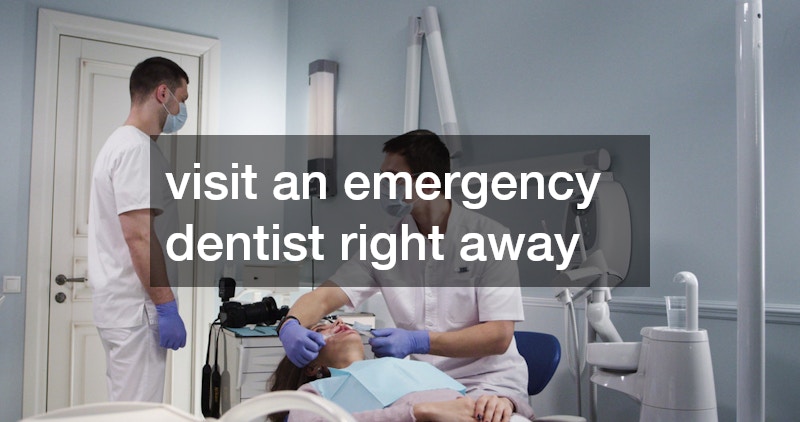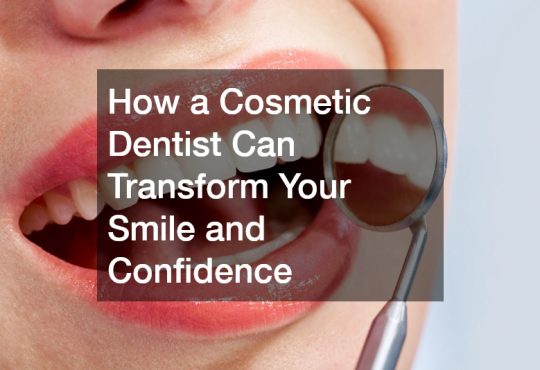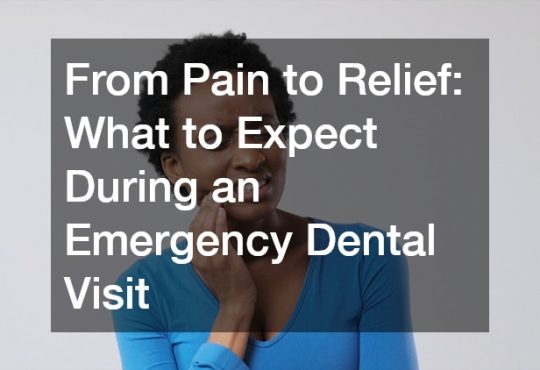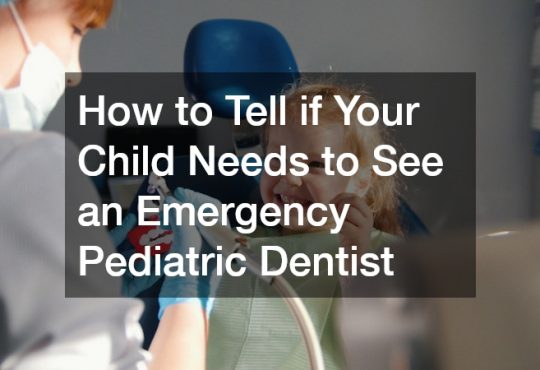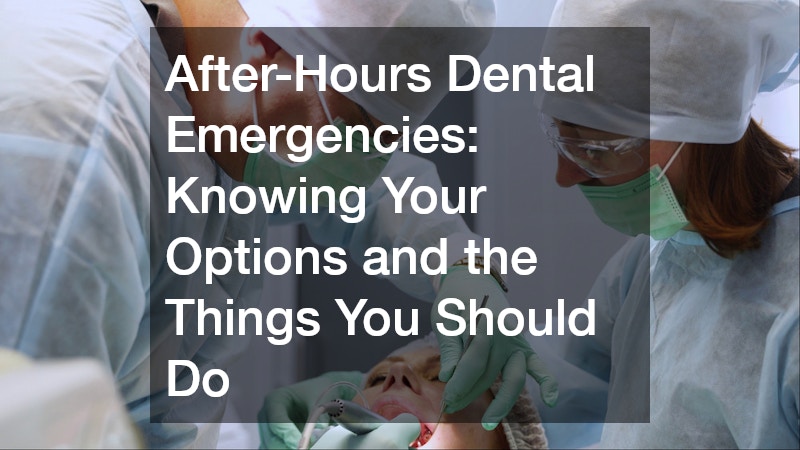
After-Hours Dental Emergencies Knowing Your Options and the Things You Should Do
Disclaimer: The material provided is designed to inform readers about oral health and preventive care. It should not be considered medical advice. Consult a registered dentist for guidance specific to your oral health needs.
Nothing ruins an evening faster than a sudden toothache, a broken filling, or — worst of all — a tooth knocked out. Dental emergencies rarely keep office hours, and when they strike after hours, they can feel extra stressful: you’re tired, services are closed, and you want immediate relief. The good news is that knowing your options and the right first-aid steps can save pain, money, and sometimes the tooth itself.
This guide walks you through common after-hours dental emergencies, what to do immediately, where to go, and how to avoid making things worse while you wait for definitive care.
What counts as a dental emergency?
Not every tooth problem is an emergency. Here’s a rough rule of thumb:
-
Emergency (seek immediate care): severe uncontrolled bleeding, major facial swelling or infection that makes breathing or swallowing difficult, a tooth completely knocked out (avulsed), broken jaw, or any injury involving the face and head.
-
Urgent (see an emergency dentist as soon as possible): intense toothache that won’t be controlled with OTC pain relief, lost crown or large filling causing pain, swelling limited to gums or around a tooth, broken/chipped teeth exposing dentine or nerve.
-
Non-urgent: mild sensitivity, small chips without pain, routine problems that can wait for a regular appointment.
When in doubt about airway, heavy bleeding, or possible jaw fracture, call your local emergency number or go to the nearest hospital emergency department. Emergency rooms can stabilise serious injuries even if they can’t fix dental problems on the spot.
After-hours options: Who can help you at night?
If something happens after your dentist’s normal hours, you generally have a few options:
-
Call your regular dentist — many practices have an emergency number, an on-call dentist, or recorded instructions for after-hours problems. If your dentist has an answering service, they may be able to triage you or arrange a late appointment.
-
Emergency dental clinics / after-hours dentists — many cities have clinics that operate evenings, weekends, or 24/7 for toothaches, trauma, and urgent repairs. Expect an emergency call-out or after-hours surcharge.
-
Dental hotlines and tele-dentistry — services like emergency dental hotlines or teledentistry platforms provide 24/7 triage and advice. They can help you assess whether the issue is life-threatening, suggest first aid, and sometimes arrange an in-person appointment. In Australia, there are national and state hotlines and community services that can point you to after-hours care.
-
Hospital emergency department — go here for life-threatening issues (airway compromise, uncontrollable bleeding, major facial trauma). EDs can provide pain relief, antibiotics, and stabilisation; they may not do complex dental repairs and will usually refer you to an emergency dentist or an oral/maxillofacial surgeon.
Immediate steps for common after-hours problems
Below are practical, evidence-based steps you can take immediately. These actions can reduce pain, limit infection, and, in some cases, preserve a tooth.
Severe toothache
-
Rinse your mouth with warm salt water to remove debris and soothe inflamed tissue.
-
Floss gently to remove trapped food.
-
Use over-the-counter pain relief following guidance on safe dosing: paracetamol (acetaminophen) and/or an NSAID such as ibuprofen are commonly recommended, and the combination of paracetamol + ibuprofen may work better than either alone for dental pain (check dosing guidance and allergies). Avoid placing aspirin directly on gums. If you take other medications or have medical conditions, check with a pharmacist or clinician first.
Swelling or dental infection
-
Apply a cold compress to reduce swelling externally (10–20 minutes on, 20 minutes off).
-
If you notice spreading swelling, fever, trouble swallowing or breathing, go to an ED — those are warning signs of severe infection that could affect the airway. Don’t delay.
Broken/chipped tooth
-
Rinse the mouth with warm water. Save any tooth fragments in a clean container (keep fragments moist).
-
If the chip causes a sharp edge that cuts the tongue or cheek, cover it with sugar-free chewing gum or dental wax until a dentist can smooth or restore it. Avoid hard or very hot foods. See your dentist promptly.
Lost filling or crown
-
If you have the crown/filling, bring it with you to the dentist. You can temporarily re-seat a crown using dental cement (sold in pharmacies) or even denture adhesive as a last resort, but avoid forcing it — see a dentist ASAP. If the tooth is painful, use analgesics and avoid chewing on that side.
Knocked-out tooth (avulsion) — act fast
This is one of the most time-sensitive emergencies. For a permanent tooth:
-
Find the tooth and pick it up. Do not hold it by the root; make sure you’re holding it by the crown (the white chewing part).
-
If dirty, gently rinse with milk or saline; do not scrub or use soap.
-
If possible, reinsert the tooth into its socket and have the person bite down gently on a clean cloth to hold it in place. If you can’t reinsert it, place the tooth in milk, saline, or the person’s saliva (between cheek and gum) — do not store it dry or in tissue.
-
See a dentist immediately — the best chance of saving the tooth is to get it back in place within 30–60 minutes. For baby teeth, do NOT reinsert — seek dental advice. These steps are supported by dental trauma guidelines.
What NOT to do
-
Don’t place aspirin directly on a painful tooth or gum — it can burn tissue.
-
Don’t scrub a knocked-out tooth or wrap it in a dry tissue (it will dry out the root cells).
-
Don’t delay seeking care for spreading swelling, trouble breathing, or persistent heavy bleeding.
-
Avoid alcohol and smoking — they impair healing and can worsen infections.
Pain relief and medication — safe use at night
For immediate relief, paracetamol (acetaminophen) or ibuprofen are commonly used; combining both offers better pain control for many people, provided you follow dosing instructions and have no contraindications (liver disease, stomach ulcers, blood-thinning medications, etc.). If OTC drugs don’t help, an after-hours dentist may be able to prescribe something stronger, but opioids are not the first choice and carry risks. If you’re unsure about safe dosing (especially for children, older adults, or those on other meds), call a pharmacist, your dentist, or an emergency hotline.
Insurance, costs, and practicalities for after-hours care
After-hours and emergency dental visits often carry additional fees. Private health insurance may cover some costs depending on your policy and the provider. Public dental clinics and hospital dental services sometimes offer emergency treatment at reduced cost or for those eligible — check local health department resources or community dental hospitals. If cost is a concern, call an emergency dental hotline or your local community dental clinic for advice on subsidised or publicly funded options.
What to pack or have ready when you call or go in
-
Your contact and medical history (allergies, current medications).
-
A photo ID and a health insurance card.
-
The knocked-out tooth or fragments in milk or saline if applicable.
-
A list of symptoms and the approximate time of injury or onset.
-
If you have taken any pain medication already, note the type and time.
Children and older adults — special considerations
Children are more likely to lose baby teeth; remember, baby teeth shouldn’t be replanted. For infants and young children, seek paediatric dental or hospital advice quickly for facial trauma or persistent bleeding. Older adults on blood thinners or with other systemic illnesses may need special management for extractions or infections — tell the triage nurse or dentist about any medications like warfarin or DOACs.
Prevention and preparedness — simple steps that help
-
Wear a mouthguard for contact or high-risk sports.
-
Keep a small emergency dental kit at home (saline, a small container with lid, dental wax, gauze). A “Save-A-Tooth” kit or keeping milk/sterile saline available can help preserve an avulsed tooth.
-
Know how to reach your dentist after hours — save the number and any hotline info. In Australia, services like the Australian Dental Foundation’s Emergency Dental Hotline and state dental services can guide you.
After the emergency: follow-up and recovery
An after-hours visit often focuses on stabilising pain and infection or doing a temporary repair. You’ll likely need a follow-up appointment within days for definitive treatment — root canal, crown, permanent repair, or further surgical care. Follow the dentist’s wound-care instructions carefully: keep the area clean, take prescribed antibiotics (if any) as directed, and return for scheduled checks.
Final notes — keep calm and be prepared
After-hours dental emergencies are stressful, but clear steps and knowing where to turn make a huge difference. If you can, stay calm: rinse, control bleeding with clean gauze, apply a cold pack for swelling, take appropriate pain relief, and contact your dentist, an after-hours clinic, or an emergency hotline. For life-threatening signs — trouble breathing, severe facial swelling, or uncontrollable bleeding — head to the nearest emergency department.
